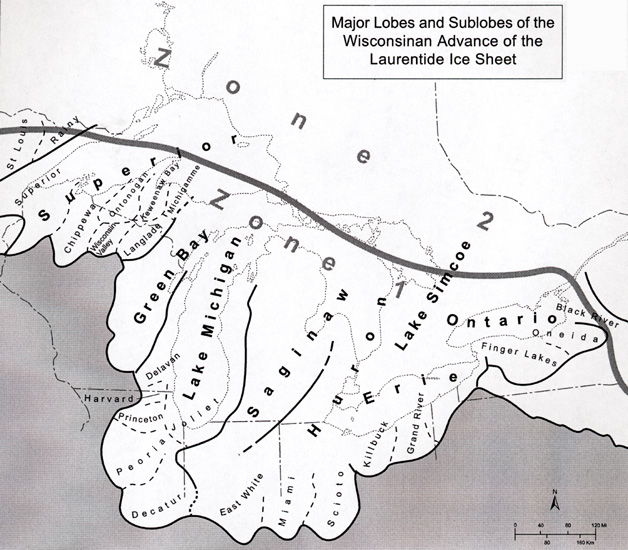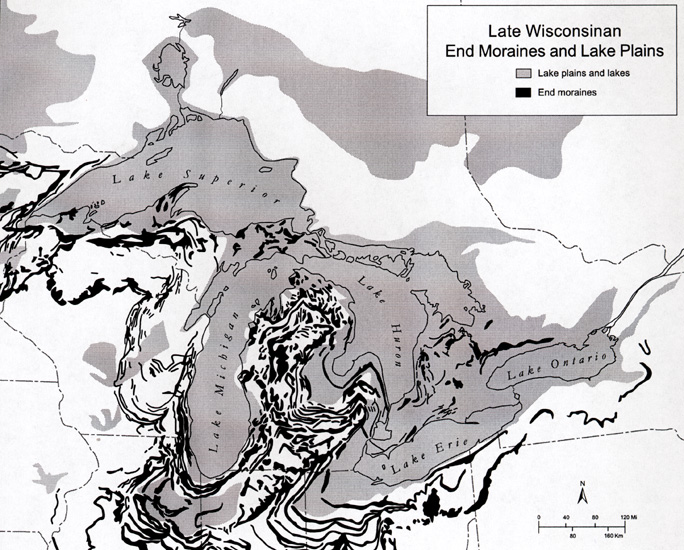INTERLOBATE MORAINES
Interlobate moraines form where two or more ice sheets make direct edge-to-edge
contact. At this contact between ice lobes, or at the "inter-lobate" area,
large amounts glacial debris is deposited, leading to high, hilly landscapes. These
are also areas where a lot of ice blocks and fragments get buried beneath this glacial
debris. Later, as these ice blocks melt, the land surface slumps, leaving behind
depressions called kettles. If filled with water, these small lakes and ponds are
called kettle lakes.
Michigan has several interlobate areas (see map below). The best
of these lie in SE Lower Michigan, which is an area that was once between the Saginaw and
Huron ice lobes. In SW Lower Michigan, another interlobate tract runs up the west
side of the state.

Note, on the map below, how the moraines tend to follow the outline of the lobes.

In those areas where the edges of two glacial lobes came near, moraines became complicated and mixed up. These areas are called interlobate moraines. The Irish Hills near Jackson are an interlobate moraine formed at the near junction of the Erie and Saginaw lobes. The rugged morainic topography near Pontiac was also formed at the region of union and squeeze of the two lobes. The high hills north and south of Grand Rapids, were developed where the Saginaw and Michigan lobes met, and the rugged hills through the region of Clare, Grayling, Gaylord, were formed by the Huron and Michigan lobes working together. How do we know the rugged interlobate regions were the work of two lobes? By the material in them. For example, the Erie lobe scraped the bed rock from the limestones of Monroe County and we find slabs of that rock on the southeastern slopes of the Irish Hills, but on the northern slopes we find fragments of the Pennsylvanian rocks left there by the Saginaw lobe from the bed rock over which it passed. On the hills east of Gun Lake, in Barry County, rocks that came from north of Georgian Bay are found, but west of Gun Lake the hills carry fragments of rocks that are the bedrock of the western Northern Peninsula.
This material has been compiled for educational use only, and
may not be reproduced without permission. One copy may be printed for personal
use. Please contact Randall Schaetzl (soils@msu.edu)
for more information or permissions.